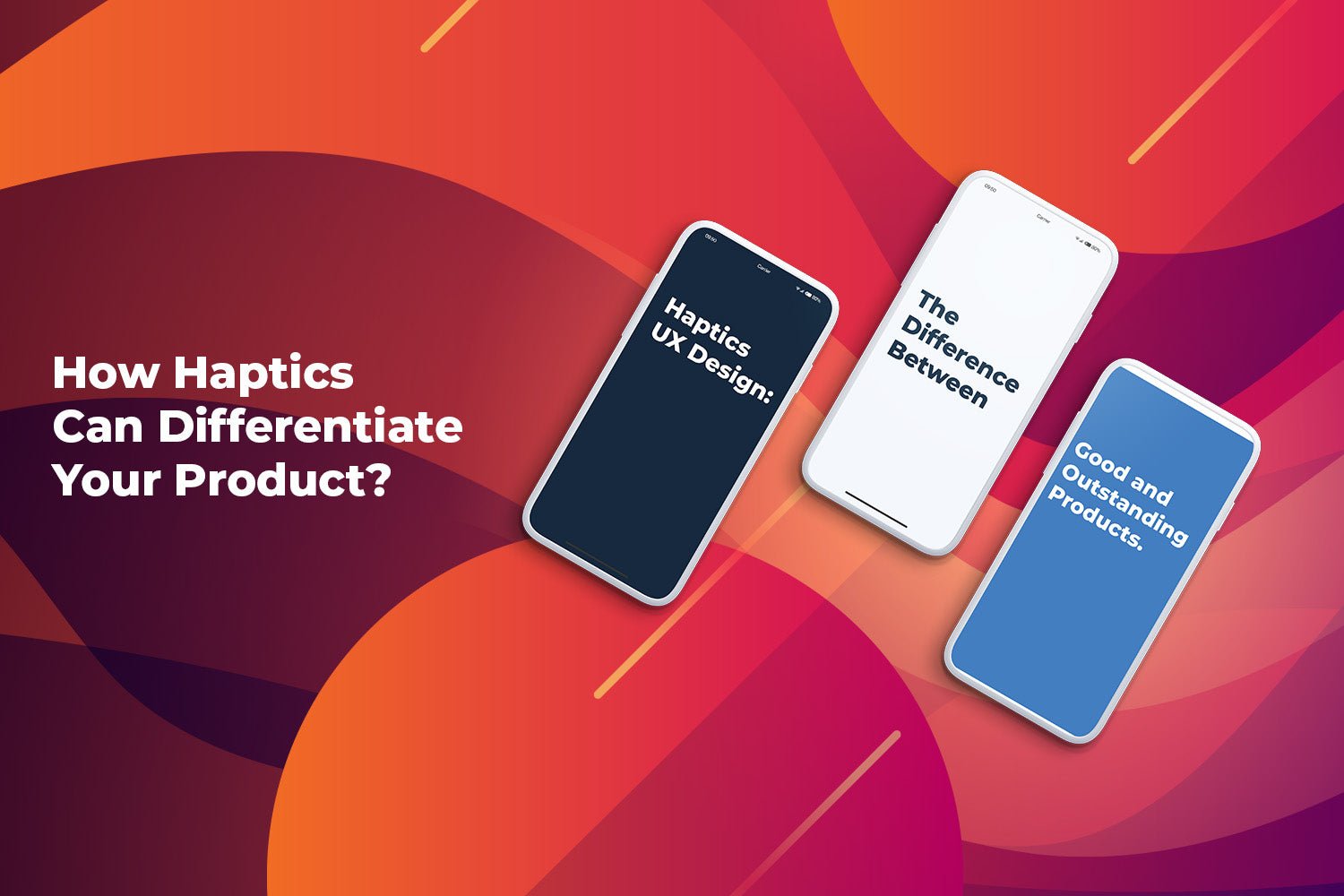
What makes a good product? Performance? Industrial Design? Features? Usability? Value? All those answers are good. In fact, they are all factors considered by UX designers when they are crafting their products to create the best user experience.
The electronic devices we use every day are heavily influenced by UX designers. Products are now created from the ground up to create lasting positive experience to their users. UX designers are now an important part of the world’s biggest tech companies’ success.
UX early focus was mainly to help the adoption of complex computing machines in the 90s. How to make technology easy and fun to use. Fast forward to 2020 and it’s obvious that we now live in the mobile era. The evolution of electronic devices in the last years is remarkable. We went from having a computer per household to multiple computers per person. We now have computers, tablets, smartphones, and wearable devices like smartwatches. We’re connected more than ever. It is not surprising to learn that UX designers are now focusing more than ever on mobile devices!
Electronic Devices UX Was Driven by UI Usability

The evolution of electronic devices mainly revolved around UI (User Interface) design. For long, a good device was a device that is easy to use and can perform a task efficiently. This is the reason why UI Design draw so much attention since the 90s. We now have different operating systems with thoughtful design that are easy to use. Since nowadays UI often share the same design philosophy, a fair argument can be made all major software, websites and OS behave very similarly and one user can jump from a platform to the other easily, without feeling lost. An iOS user would not be completely lost using an Android device and vice versa.
This raises interesting questions. If devices now behave and look similar, how can UX designers differentiate their product? Where should UX designers focus? Where can UX design innovate from now?
Where Should UX Designers Turn Their Focus? Haptics!
We have great news for UX designers that are looking for new ways to craft innovative user experiences! There still a significant sense that is currently an afterthought in UX, haptics!
Think about it. Every HMI was based on physical buttons before that storm created by capacitive touchscreens. Some people were reluctant to migrate from their beloved Blackberry devices to the new iPhones and Android devices. It’s obvious that touchscreen smartphones brought too much value to be ignored, so people eventually made the switch, but touchscreen basically removed the touch sense from electronic devices (quite the oxymoron).
Now you may think that haptics is nothing new. Haptic technologies have been around for a while. They are used in gaming controllers and smartphones. People know what haptics is. You’re right, but current haptic technologies are very limited, and they don’t make a compelling case of “bringing back the sense of touch” to electronic devices. There is nothing appealing in a crude buzz feeling.
Haptics has slowly evolved in the last years. The smartphone is the main driving force behind the latest trend to improve haptics. Fortunately, there is a new haptic technology, completely different than what is currently used, that offers a significant leap in performance.
The Best Haptics UX Design Starts With the Best Hardware
This new technology is called piezo haptics. Instead of using magnetic fields to move a mass to create vibration, piezo haptics use a piezoelectric material (often ceramic) that deforms with an electrical current. While we won’t go into much of the behind piezo haptics performance claims, what you need to remember is that they can create stronger, more detailed and nuanced tactile effects that legacy technologies like the LRA and ERM just can’t match.
Next-gen piezoelectric haptics is starting the HD tactile effect era. What we mean by advanced haptics is effects like extremely sharp clicks, powerful impacts, highly detailed effects, like textures (imagine feeling the t-shirt fabrics on your smartphone when shopping online). This level of customization is not available with the current technologies used on the market (yes, even the current best smartphone haptics cannot match piezo haptics’ performance).
We encourage you to watch this short video to compare the different haptic technologies available. It is important to understand that if you want to tailor the best tactile experience, you need better hardware. We strongly encourage you to try piezo haptics because it really is an eye-opening experience.
If there is one thing UX designers need to remember about piezo haptics, it would be this: For the first time, you are not limited by haptic hardware anymore. Design thinking, a technique often used by UX designers, revolves around the user and you often need to validate your hypothesis before adding a feature in your product, but with groundbreaking technology, like piezo haptics is, you need to go further and explore what you can now accomplish. Your customers don’t know what is possible with new technology. It’s up to UX designers to create new tactile experiences that will blow their customers’ mind. This represents a major business opportunity for every electronic device OEM.
Perceived Value of Better Haptics

We strongly believe piezo haptics will be a major differentiator for upcoming electronic devices. Just like OLED vs. LCD screens and the different camera sensors now available. We validated our assumption with public and customer feedback from various sources. Let’s first see how you can find this feedback and measure what the current public value perception of haptics is.
Internet Forums
One easy way to measure public perception on haptics, while not very scientific, is to read internet forums. Fortunately for us, Reddit has multiple posts and subreddits on the matter. Redditors often ask questions on the haptics quality of smartphones before buying them. A quick search generates multiple results.
Reddit – How much do you care about haptic feedback?
Reddit – The Taptic Engine makes my other devices feel broken (I love it!)
Reddit – Pixel 3 XL haptic is addictingly good
One thing that particularly caught our attention is that many users simply choose to shut off their phone haptics because they find it annoying. Not encouraging for haptics to help with product differentiation, right? Not so fast. If you dig deeper, you’ll notice that people dislike basic haptics, because they’re not good. Multiple examples of people that don't use haptics are in fact happy to use it on newer devices with better haptic engines. They quickly went from annoyed by haptics, to falling in love with them. That’s a quick turn around!
Another important factor that pops out of those reddit posts, is that people that have been in contact with better haptics now expect them when they change their smartphone. For many of them, there is no going back to basic haptics, it’s now an important decision factor!
Product Reviews
The second way to measure the public perception is to read product reviews. Again, this information source is not scientific by any means, but they reflect the opinion of technology early adopters. It’s important to get this feedback when you design a product. If early adopters dismiss your product, there is a high chance the product won’t have enough momentum to reach the average users with success.
Here are a few reviews of smartphones that did put some efforts in their haptic actuators. You’ll see many iPhone articles, because they’re one of the rare companies that promote their Taptic Engine.
Android Central - It’s 2018 and Android phones still can’t compare to the iPhone’s Taptic Engine
The Verge - Demand good vibrations from your next Android phone
iMore – iPhone’ 7’s secret weapon: The new Taptic Engine
The main point behind those articles is simple. Smartphone OEMs need to acknowledge the fact that their devices simply does not match the better feedback of the best smartphone on the market. While those articles are a few years old, and that high-end smartphones are using better actuators, there is still a lot of room to innovate!
Scientific Literature
The third way to measure public perception, and this one is scientific, is to read the scientific literature on haptics.
An interesting read is the Measuring the Added Value of Haptic Feedback study, because it reflects what can be measured in product reviews and on internet forums. People’s appreciation of haptics increases once they’ve been in contact with those technologies.
New Piezo Haptic Hardware is a Business Risk… Particularly If You Ignore It

Your customers expect better haptics. Where do you go from there? Listen to them and give them the best! Start playing with piezo haptics. It’s the next leap in haptics and the performance difference between legacy technologies like ERMs and LRAs is staggering. You must start to experience and design with this new technology as soon as possible.
We understand that embracing new technologies always represent a business risk, but you shouldn’t see it that way. Remember that your customers expect better haptics and it becomes an important purchase decision factor once they are exposed to it. Missing the opportunity and play catch-up to the innovators is a bigger risk for your company. You could lose your customers to the competition and never see them again!
Our team can also help you reduce the business risk associated with piezo haptics. Unlike other semiconductor business, haptics is our core business, and our support does not stop at our driver (even though our tech is revolutionary). We have a multidisciplinary team to support every member of your team. We’re talking about electrical, software, mechanical and manufacturing engineering support. We can also help you define the UX design needs you have. We can support you through all the development phases of your product, from early evaluation to mass production.

Leave a comment